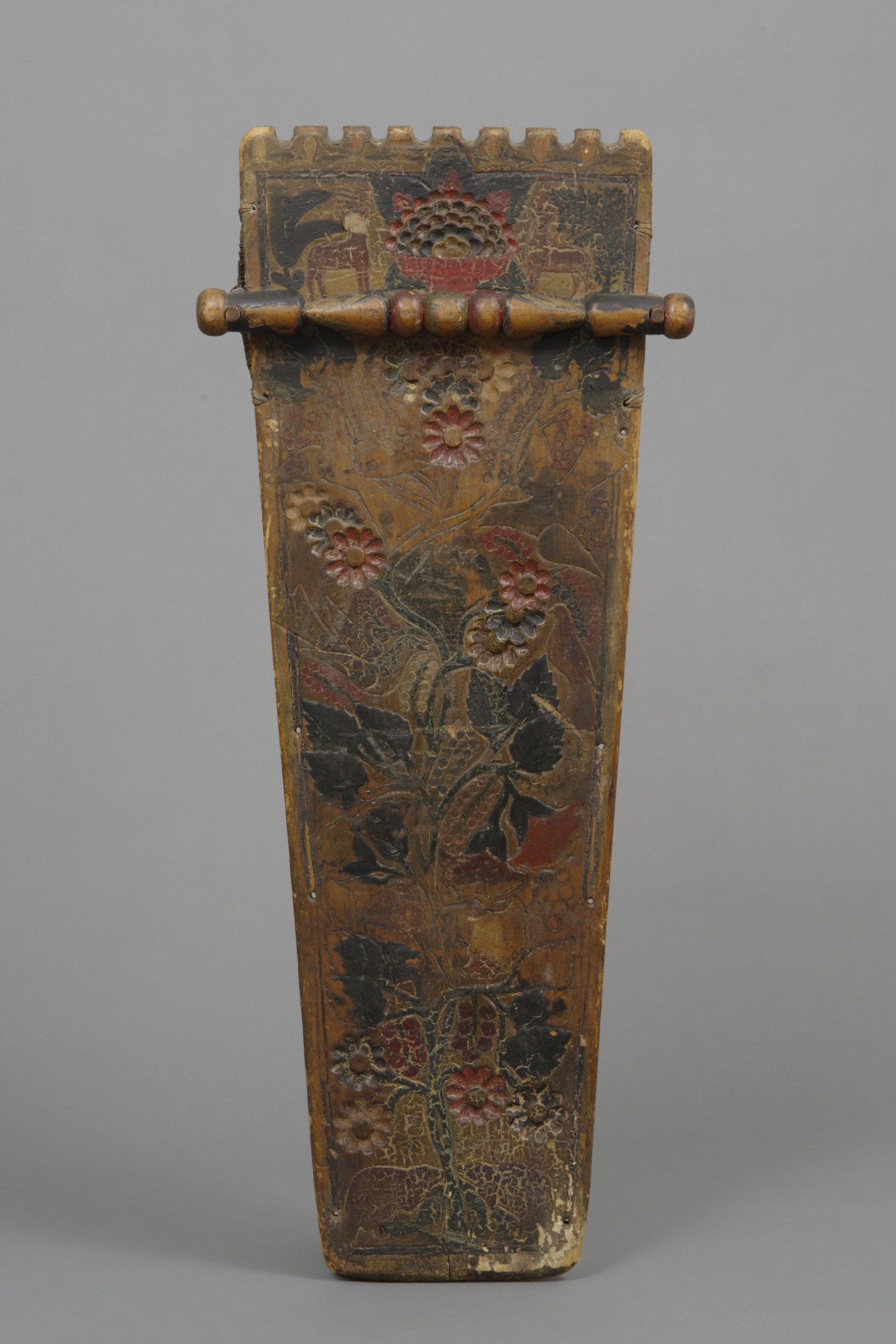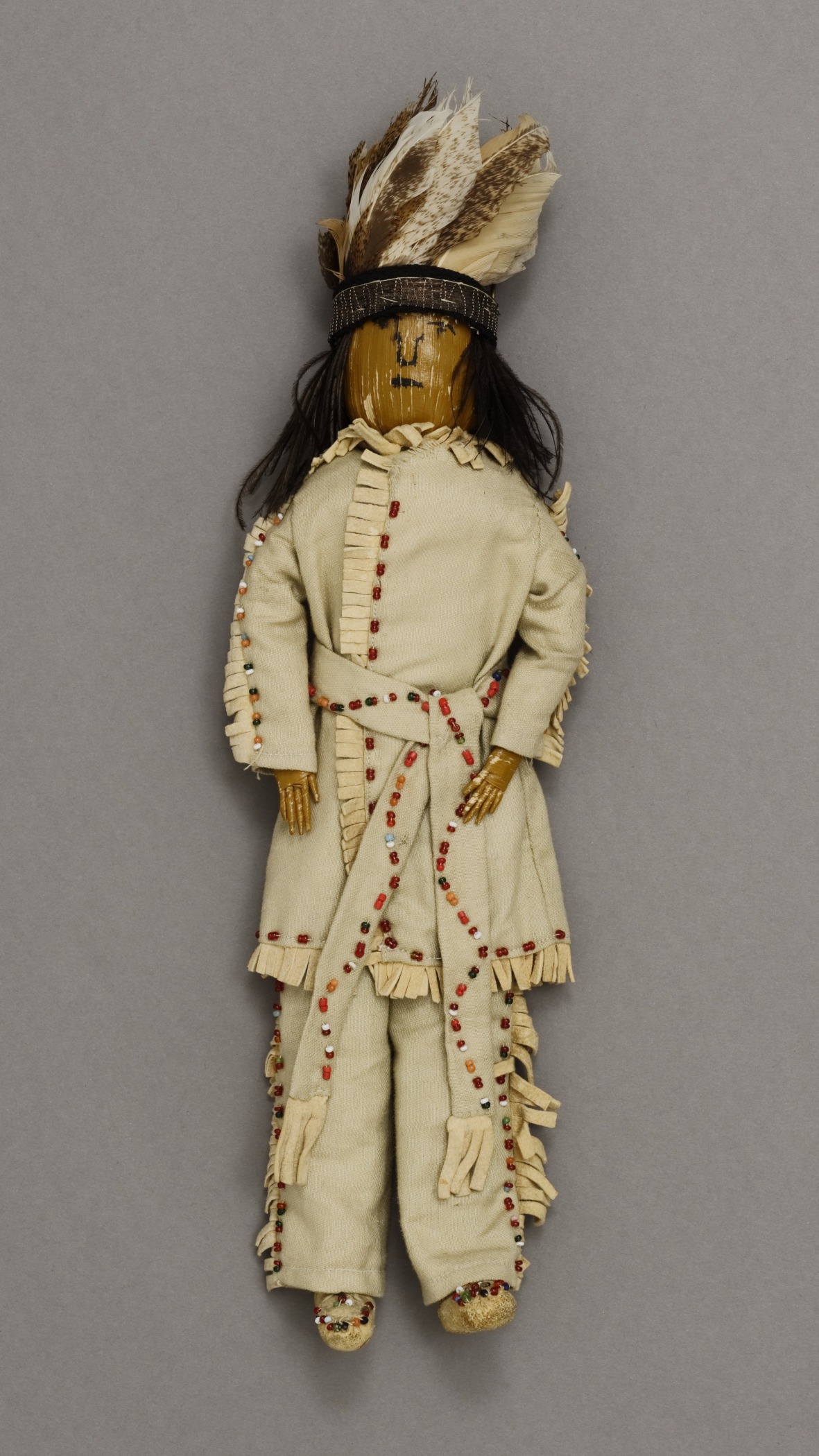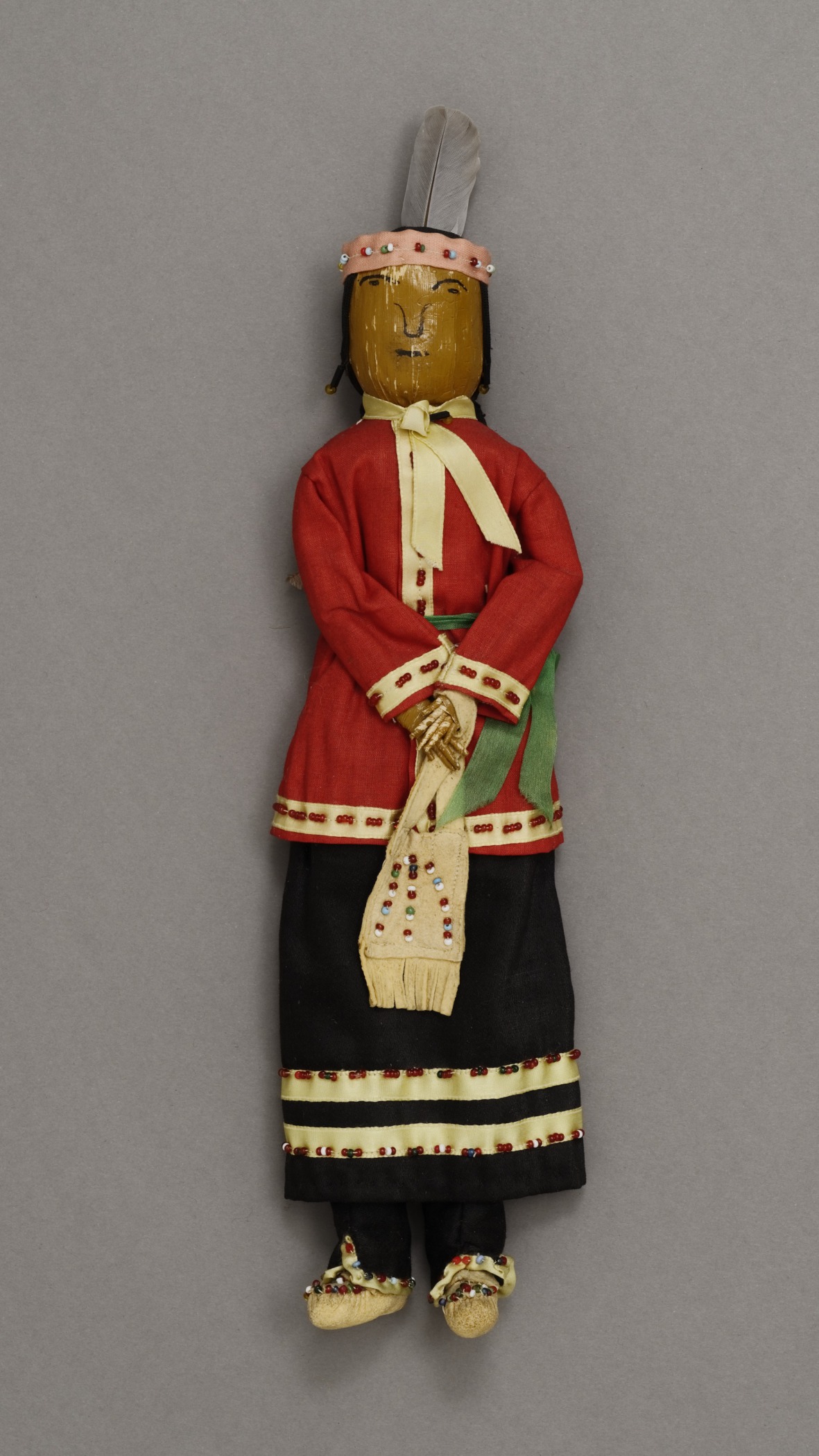Oneida (Haudenosaunee, Iroquois)
Doll representing an Oneida man
- 1946
- Corn husk, cotton cloth, buckskin, glass trade beads, and turkey and pheasant feather
- 13 1/4 × 3 11/16 × 1 3/4 in.
Hood Museum of Art, Dartmouth College: The Wellington Indian Doll Collection, Gift of Barbara Wellington Wells; 987.35.26725
visibilityLook & DiscussUnknown people (Woodlands), birch bark canoe model, early 20th century. Birch bark and wood, 7 1/2 × 2 7/8 × 2 1/16 in. Hood Museum of Art, Dartmouth College: Gift of Emily W. and George H. Browne; 42.12.8514.
An unknown artist on the Oneida Reservation in Wisconsin created this cornhusk doll about 60 years ago. This doll was made for sale, but dolls like it were also made for young children to teach them about their roles in society. Among the Oneida, men were largely responsible for hunting, fishing, and warfare. They made tools and built structures, like the longhouses in which Oneida families lived. A young boy might have placed a male doll in a miniature canoe, like this one, to imagine him fishing, or given him a miniature knife, bow and arrow, or gun to imagine him hunting or at war.
explore the object
Like many Native American dolls made for sale, this doll is dressed in ceremonial clothing. Prior to contact with Europeans, the Oneida used deer hide for their clothing and decorated it with porcupine quills and shells. Europeans brought cloth and glass beads, metal needles and embroidery thread. The maker of this doll used cloth for the leggings, jacket, and belt, and deer hide for the fringe and moccasins. She decorated the clothing with glass beads.
This doll’s headdress does not represent the type of headdresses Oneida men wore traditionally and continue to wear today. Oneida men wear gustowehs (ga-STOH-wehz), or feathered hats. The frame of a gustoweh is made from black ash splints, which are then covered with deer skin or cloth. Turkey and grouse feathers cover the dome, and eagle feathers signify the tribe. Oneidas wear two feathers: one up and one down. The headband is sometimes decorated with silver or copper bands, porcupine quills, and beads.
This doll maker created a more generalized headdress for this doll, perhaps reflecting the types of headdresses worn by nearby Plains cultures, and the types of headdresses non-native visitors to the reservation might expect to see on a Native American doll.
Even though the headdress is different, the materials are the same. The hair of the doll is made of long turkey feathers, and the headdress is made up of grouse or pheasant feathers.
learn more
For an excellent teacher resource on Native American dolls, access the Fall 2004 issue of Smithsonian in Your Classroom by the The National Museum of the American Indian.





